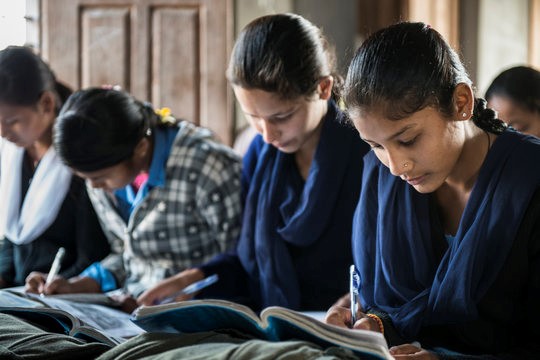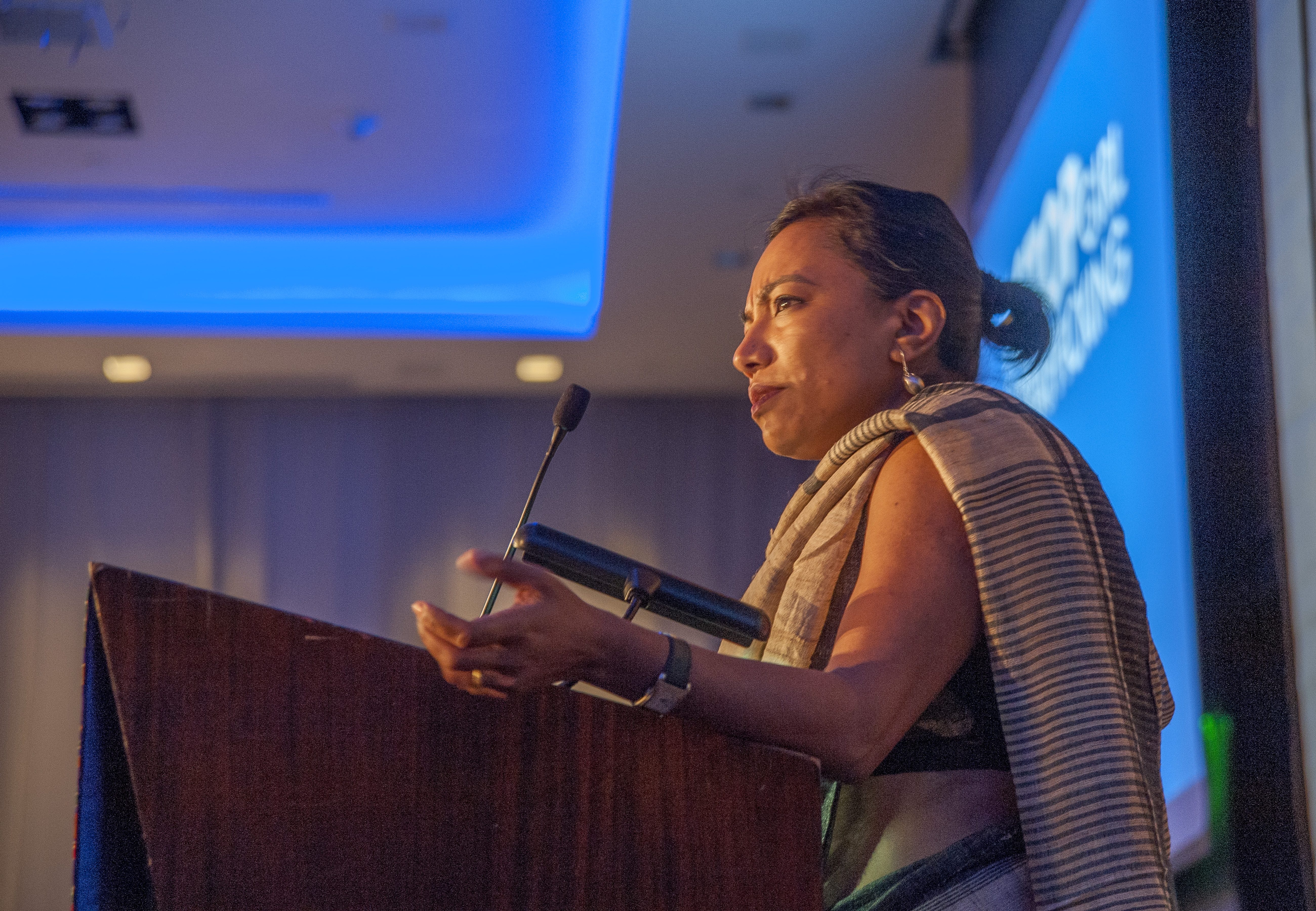A courageous witness to the scourge of slavery and trafficking of girls in her home country, Nepali journalist and filmmaker Subina Shrestha currently is researching at Harvard University how women and minorities in Nepal can achieve social and political rights.
Her moving speech to 300 guests at our March 23 fundraiser in San Francisco (photo above) helped us raise $350,000 to continue educating 14,000 girls and protect them from traffickers in Nepal. This is an edited version of Subina’s talk:
The year was 1996. I was 21 and living in Bombay, the Indian city of dreams, studying to be a social worker. Not far from my college there were as many as 200,000 other Nepali girls who had been trafficked and sold into prostitution. There – in those infamous brothels of Kamatipura and Falkland Road – I was sent on a fact-finding mission.
Walking around the narrow alleys I met girls who looked vaguely like me, standing outside the brothel doors, each with a tight blouse, a dirty petticoat and sad make-up, waiting to find customers. Some looked petrified, some resigned, and some had that hardened look – one that comes after years of rejection, torture, and mistrust.
Inside the brothels, filthy curtains separated rows of beds, each cubicle with a picture of a Bollywood actress. I remember crying with a young girl – she too was 21 – who asked me what to do with her fifth pregnancy. She had aborted four already. One day, when an emaciated girl dying of AIDS and TB howled in pain and desperation, I ran blindly trying to escape the sound of that howl.
Back in Nepal, a short while later, I visited the district of Sindhupalchowk. Many trafficked girls came from this district, just a few hours north of Kathmandu. Young girls not allowed to go to school, who did all the housework in their homes, were most in danger of being trafficked.
One girl pointed to a hillside dotted with shiny tin roofs. The money from Bombay is what puts roofs on the houses, she said. Poverty and desperation mixed with patriarchy and a preference for boys meant that girls were disposable. Many girls said that they had no future in their village. We heard stories about parents selling their daughters, brothers their sisters, and husbands their wives.
Labor migration contributes more than a quarter of Nepal’s GDP – and as many as 200,000 women work abroad. Many of these women face abuse and many others fall into the hands of traffickers who use the open border between Nepal and India to smuggle girls into third countries. There is no data on how many such women are scattered around the world.
Over the past two decades, vigilance on border crossings between Nepal and India has reduced the number of girls trafficked through those channels. Even so, UNICEF data shows that as many as 7,000 are trafficked to India every year, down from 15,000 a few years ago.
Nepali girls are also trafficked from their villages to wealthier households where they are exploited in the same way. In South-West Nepal I met 15-year-old Sabita – her hair all grey. She told me how she was made to sleep in the toilet, and was raped by the house owner in Kathmandu where she worked as a domestic help. She was kicked in the stomach until some ribs broke.
Fifteen thousand women, trafficked from villages across Nepal, are working as sex workers in Kathmandu alone.
I’ve always wondered about the accident of birth. Could I have been one of these girls?
Just a generation ago, in a neighbourhood in old Kathmandu, my grandmother made a bold decision. She was a widow, dirt poor, with one child, a daughter, and at one point had worked as a domestic help. But she became convinced that the only way to escape poverty and exploitation was to send her only daughter to school.
My grandmother’s faith in education opened a new world for my mother, and eventually for me and my siblings. That one decision is the reason that I am standing here, in front of you, to talk about the possibilities of education, the possibilities for women to challenge the power structures of patriarchy, that keep them – keep us – as exploitable subordinates.
More than 14,000 girls are in school because of your help. But I cannot begin to emphasize how urgent the need is to expand this commitment to hundreds of thousands.
Unemployment across Nepal is at 46 percent, making girls ever more vulnerable to trafficking. More girls need to be in school, and to stay in school.

Students supported and protected by STOP Girl Trafficking, in their Nepali classroom
** **
It costs only $100 to educate one Nepali girl for a year. The $350,000 that donors contributed at last month’s STOP Girl Trafficking event will support one-fourth of the SGT girls now safe and in school. On behalf of all these girls, we thank you all!
** **
To view Subina Shrestha’s riveting 25-minute documentary broadcast by Al-Jazeera, “Nepal’s Slave Girls,” please go to: https://vimeo.com/161890577
Photo credits: Gordon Wiltsie (top), and the American Himalayan Foundation (bottom).


Leave a Reply